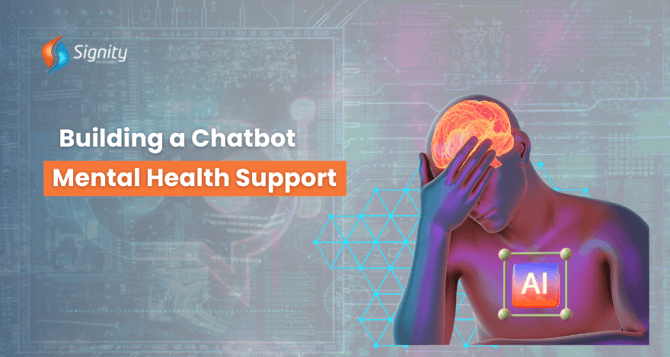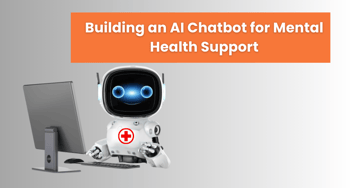Harnessing the Power of AI: Building a Chatbot for Mental Health Support
Embark on a transformative journey in mental health support with our guide on creating AI chatbots. Benefit from AI-powered insights, compassionate responses, and ethical considerations. Elevate accessibility and confidentiality in mental health assistance.

In an era emphasizing mental health, AI-driven chatbots have emerged as vital tools for accessible support. Explore the journey of creating an AI chatbot for mental health, unveiling benefits, technical intricacies, and ethical considerations.
The Role of Chatbots in Mental Health Support
AI-powered chatbots redefine mental health assistance, offering accessibility, anonymity, and scalability. Providing immediate, non-judgmental support, they complement traditional therapy by ensuring continuous monitoring and guidance between sessions.
Technical Implementation
Let's walk through the technical implementation of building an AI chatbot for mental health support using Python and the TensorFlow library:
Step 1: Data Collection and Preprocessing:
- Collect a dataset of conversations related to mental health from reliable sources or create synthetic data.
- Preprocess the text data by tokenizing, removing stopwords, and performing other text cleaning techniques.
Step 2: Model Development:
- Use a pre-trained language model, such as BERT or GPT, as the backbone of the chatbot.
- Fine-tune the language model on the mental health dataset using transfer learning to adapt it to the specific task.
- Implement a sequence-to-sequence architecture with attention mechanisms for generating responses.
Step 3: Integration with a Chat Interface:
- Implement a chat interface using a web framework like flask or a messaging platform API like Telegram or Facebook Messenger.
- Use the trained chatbot model to generate responses to user queries in real-time.
- Implement features such as sentiment analysis and emotion detection to provide personalized responses.
Step 4: Deployment and Monitoring:
- Deploy the chatbot on a cloud platform such as AWS or Google Cloud for accessibility.
- Monitor user interactions and feedback to continuously improve the chatbot's performance.
- Implement safeguards to protect user privacy and confidentiality, such as encryption and secure data storage.
.jpg?width=1200&height=250&name=How%20to%20Build%20an%20App%20With%20ChatGPT%20(1).jpg)
Ethical Considerations
When developing an AI chatbot for mental health support, it's important to consider ethical considerations such as:
- Privacy and Confidentiality: Ensure that user data is handled securely and by privacy regulations.
- Informed Consent: Communicate the capabilities and limitations of the chatbot to users and obtain their consent before engaging in conversations.
- Bias and Fairness: Mitigate biases in the training data and model to ensure fair and equitable treatment of all users.
- Crisis Response: Implement protocols for identifying and responding to users in crises, including providing resources for seeking immediate help.
Conclusion
Building an AI chatbot for mental health support has the potential to provide valuable assistance to individuals in need, offering accessible and confidential support services. By leveraging AI and NLP technologies, developers can create chatbots that are capable of understanding and responding to user queries in a compassionate and empathetic manner. However, it's essential to approach the development process with sensitivity to ethical considerations and a commitment to ensuring the well-being and safety of users.
However, it's essential to approach the development process with sensitivity to ethical considerations and a commitment to ensuring the well-being and safety of users.


%201-1.webp)


.png?width=344&height=101&name=Mask%20group%20(5).png)








.png?width=352&name=microsofts-recall-feature%20(30).png)







